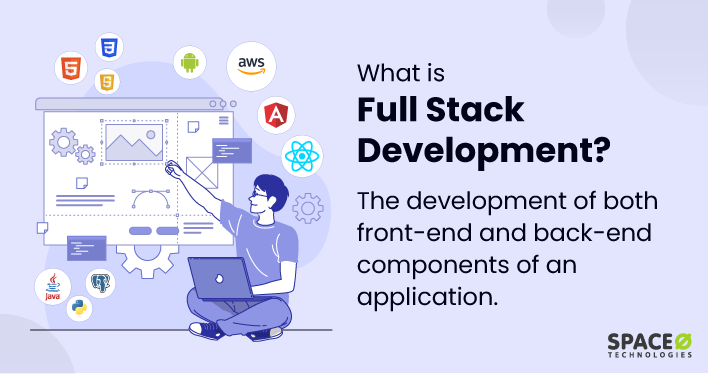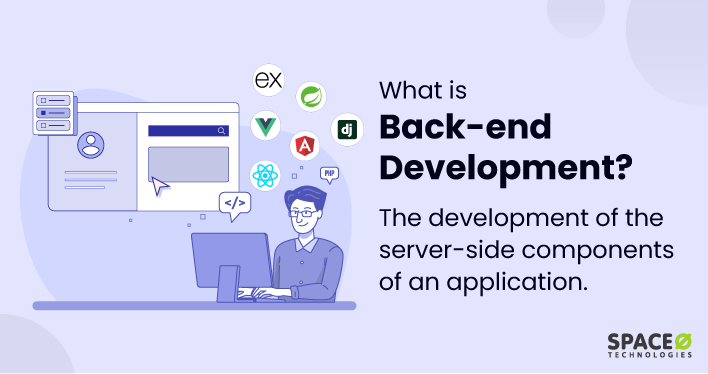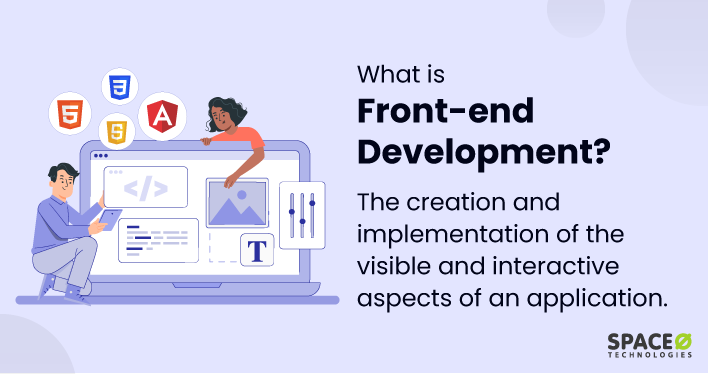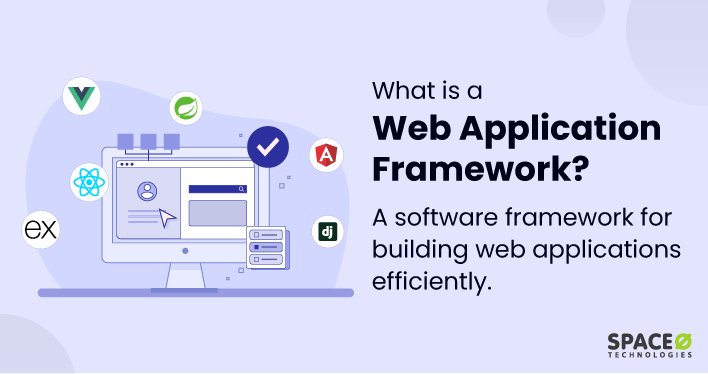Table of Contents
What is Full Stack Development?
Full stack development refers to the process of designing, building, and maintaining all aspects of a web application, including both frontend (user-facing) and backend (server-side) components.
As a full stack developer, you have the ability to create a web app from start to finish, ensuring seamless integration between user interface and server-side processes. This end-to-end creation process can be quite complex. So, get a detailed walk-through of the full development process, by going through our step-by-step guide to build a web application. This guide can help you better understand and navigate the journey of full stack development.
Let’s quickly understand some of the key components of full stack development
Which are the 3 Key Components of Full Stack Development?
Here are the 3 core components of full stack development:
- Frontend Development: Frontend development entails creating and implementing a web application’s user interface (UI) and user experience (UX). To build aesthetically pleasing and dynamic websites, frontend developers use tools like HTML, CSS, and JavaScript as well as frameworks and libraries like React, Angular, and Vue.js. Want to know more about front-end development? Here is an overall concept explained on what is front-end development.
- Backend Development: Backend development focuses on creating and managing servers, databases, business logic, and application logic. This ensures a seamless experience for users by providing the necessary data and functionality for the front end. Backend developers work with programming languages like Python, Ruby, PHP, Node.js, Java, and .NET, and use database systems such as MySQL, PostgreSQL, MongoDB, and Firebase. If you are looking to know in detail about backend development, here’s a brief explanation of what is backend development.
- Version Control: Git and other version control tools are necessary for effective code management. They make it possible for full stack engineers to keep track of changes made to their code, work together with other developers, and keep a tidy repository of their work. Both small-scale initiatives and large-scale, intricate applications with several contributors require this.
By mastering these key components, full stack web developers are equipped to handle all aspects of developing web applications, from designing user interfaces to managing servers and databases.
Which Languages and Frameworks are Used in Full Stack Development?
In full stack development, various programming languages and frameworks are used to handle both frontend and backend tasks. Here’s a table of some common languages and frameworks used in full stack development:
| Category | Technologies & Frameworks |
|---|---|
| Frontend | HTML |
| CSS | |
| JavaScript | |
| React | |
| Angular | |
| Vue.js | |
| Backend | Python |
| Ruby | |
| PHP | |
| Node.js | |
| Java | |
| .NET | |
| Databases | MySQL |
| PostgreSQL | |
| MongoDB | |
| Version Control | GIT |
Now, you know the technologies required for development, let’s check the importance of full stack development.
Why is Full Stack Development Important?
Full stack development is important for several reasons, as it brings numerous benefits to the web development process, team dynamics, and overall project efficiency. Some of the key full stack development advantages include:
- Provides faster development cycles: Faster development cycles: Since full stack web developers are knowledgeable in both frontend and backend technologies, they can work on various project components at once. This leads to a more efficient development process and a shorter completion time.
- Offers improved collaboration: Collaboration is improved because full stack developers are better able to communicate with team members who have expertise in different areas because they have a thorough understanding of the complete development stack. As a result, they can more easily detect and handle problems across the entire project, which promotes improved teamwork and problem-solving.
- Lowers the cost: Employing a full stack web developer often results in the need for fewer specialized developers, which lowers project expenses. Because full stack engineers are capable of handling many tasks, smaller teams can operate more productively while still producing high-quality work.
- Results in Greater adaptability: Full stack developers frequently have experience with a variety of technologies and are able to quickly learn new tools and frameworks as needed. This adaptability is essential in the quickly evolving field of web development, where new technologies are always being developed.
- Provides Comprehensive solutions: Full stack developers may offer end-to-end web application solutions, ensuring that all project components are properly integrated and run without interruption. The end result is a product that is of higher quality and more cohesive.
How to Become a Full Stack Developer?
Becoming a full stack web developer involves acquiring a diverse skill set that spans both frontend and backend development. Here are the general steps to follow on your journey to becoming a full stack web developer:
- Basic frontend and backend development knowledge: Learn the fundamentals of HTML, CSS, and JavaScript first because these languages are critical for developing a web page and user interface.
- Acquire knowledge of a backend programming language: Choose a backend language, such as Python, Ruby, PHP, Node.js, Java, or .NET, and learn the basics. Each language has its own advantages and popular frameworks to work with.
- Get familiar with a backend programming language: Learn the fundamentals of a backend language, such as Python, Ruby, PHP, Node.js, Java, or.NET. Every language has its own benefits and well-liked working structures.
- Become knowledgeable about database management: Learn how to build, manipulate, and manage data using SQL or NoSQL databases like MySQL, PostgreSQL, or MongoDB, as well as how databases operate.
- Understand version control systems: Learn how to use Git or another version control system to manage and collaborate on code effectively.
- Build a portfolio: Create a portfolio by working on personal projects, contributing to open-source projects, or freelancing to earn experience and demonstrate your talents.
- Network and learn from others: Join full stack developer communities, and attend meetups, conferences, and workshops to learn from experienced professionals and expand your network.
- Stay up-to-date with industry trends: Continuously learn and stay informed about new technologies, tools, and best practices in web development.
- Consider formal education or certifications: While not always necessary, completing a computer science degree, attending a coding boot camp, or obtaining relevant certifications can help reinforce your technical skills and make you more competitive in the job market.
By following these steps and dedicating yourself to continuous learning and hands-on experience, you can build a successful career as a full stack developer.
Full stack is an essential skill in the modern web development landscape. By mastering the various components involved, you can create complete web applications and efficiently collaborate with your team. With continuous learning and hands-on experience, you’ll be well-equipped to tackle the challenges faced by full stack developers in today’s fast-paced digital world.







